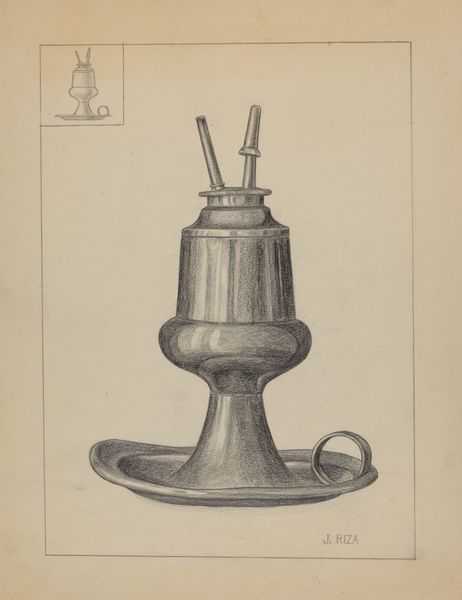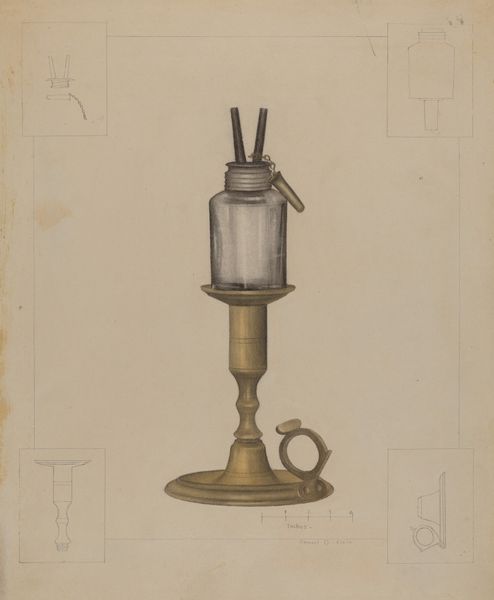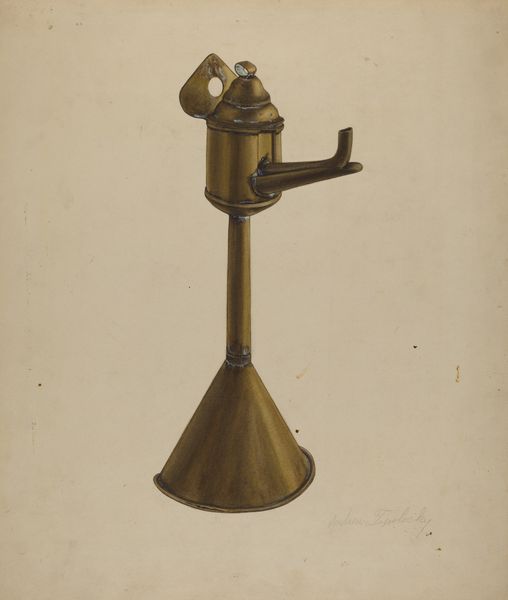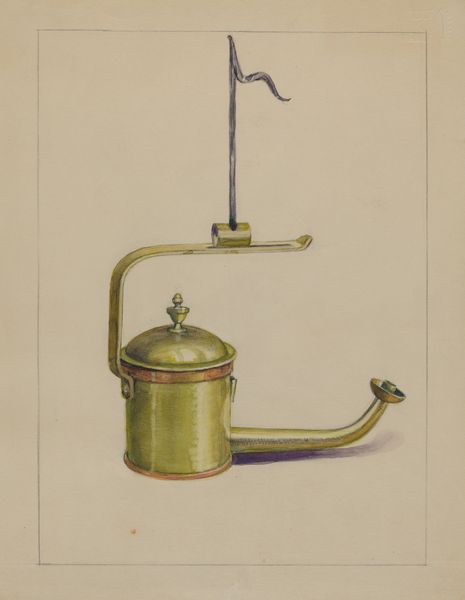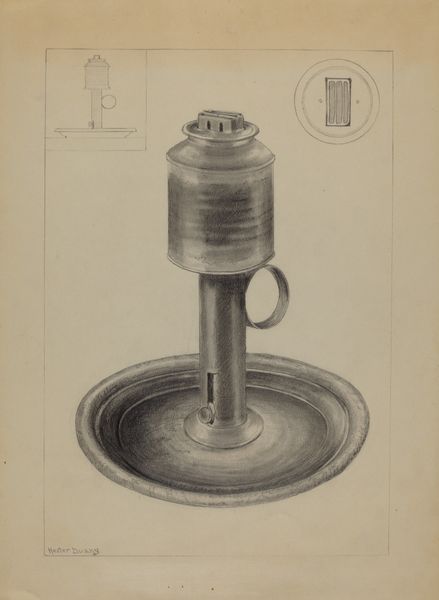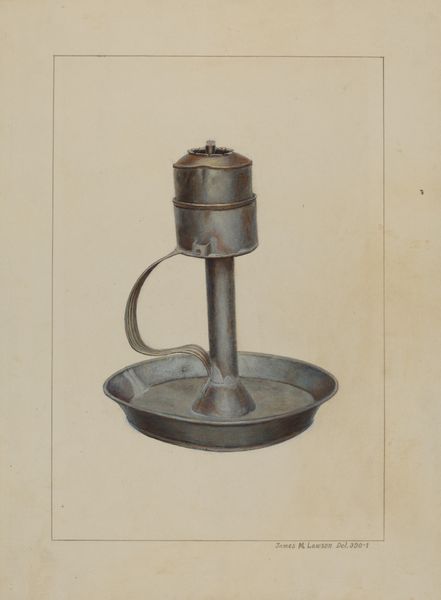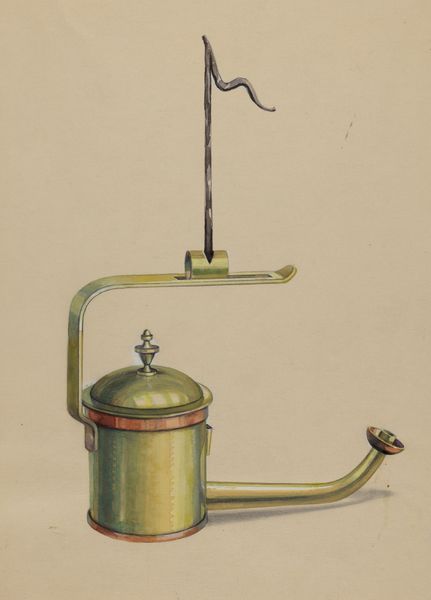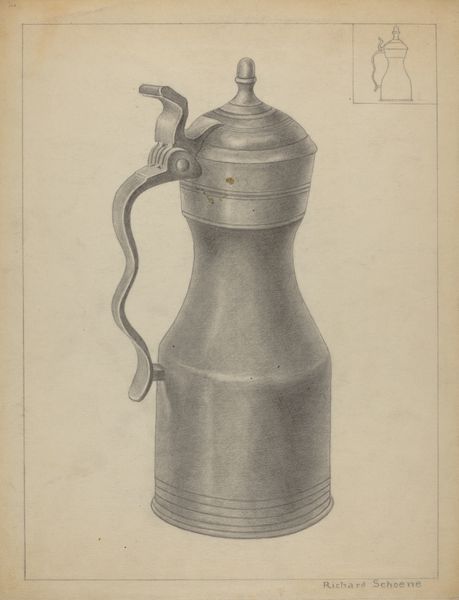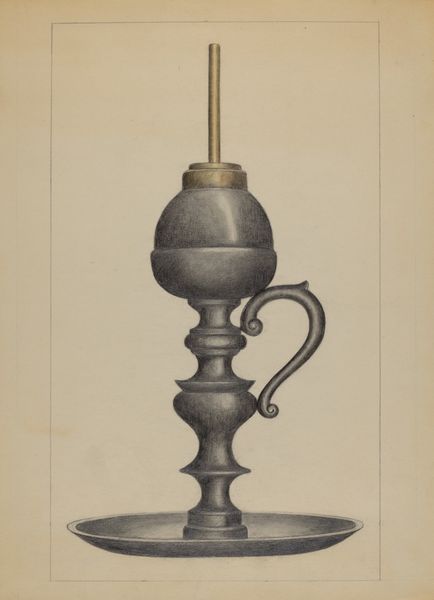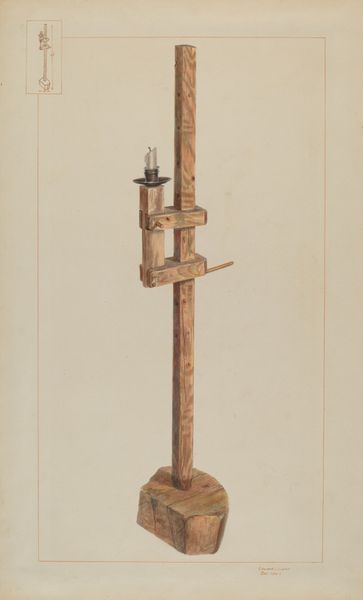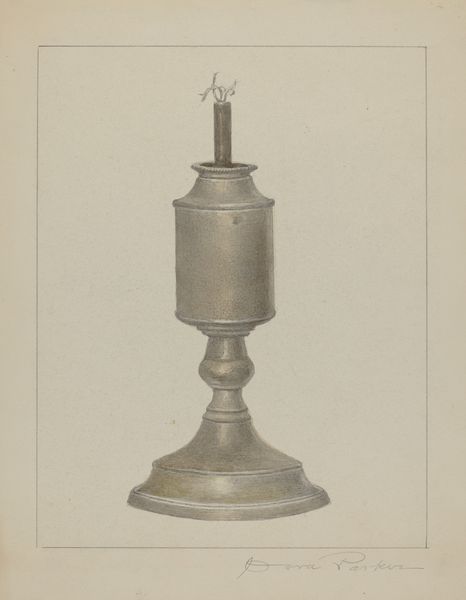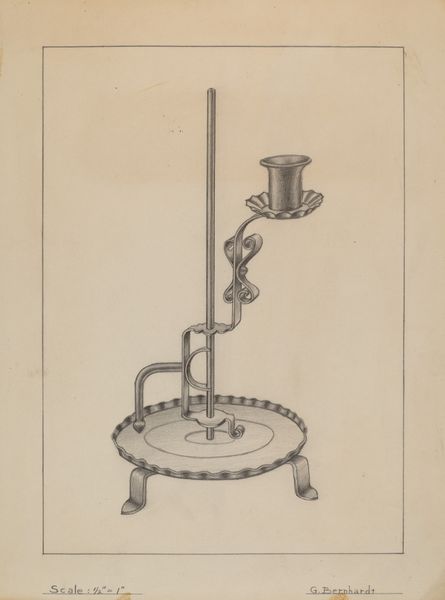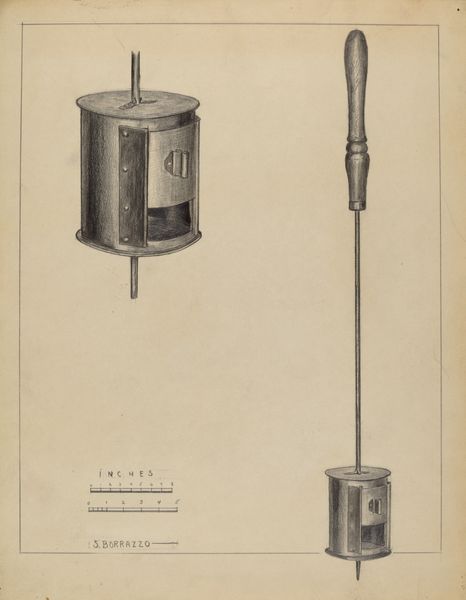
drawing, pencil, graphite
#
drawing
#
pencil drawing
#
geometric
#
pencil
#
graphite
Dimensions: overall: 29.7 x 22 cm (11 11/16 x 8 11/16 in.) Original IAD Object: clock: 3 3/8" in diameter; overall: 17 1/2" long
Copyright: National Gallery of Art: CC0 1.0
Curator: Good morning. We're standing before Benjamin Resnick's "Clock Jack," a graphite and colored pencil drawing from around 1936. Editor: It's a very controlled and somewhat haunting rendering. The precision of the lines almost makes it feel like an architectural plan, yet there's also something uncanny about this isolated, singular object. Curator: Precisely! Resnick, working within the American Precisionist style, emphasizes clean lines and geometric forms. Note how the drawing isolates the mechanism. We are asked to observe form and its pure elements—shape, line, shadow. The color palette is remarkably limited. Editor: Indeed, the ochre and blacks—the restrained palette emphasizes the work's focus on process and production. You almost feel the weight of the metal. This 'Clock Jack' seems a very specific utilitarian object, a tool for very particular labor—perhaps its context and function can shed some light on its symbolic importance. Curator: That functional element is key. One could see its geometric quality almost reflecting a larger modern interest in functionality as design. The interplay of cylinders and planes. Think of how Leger reduced the human form to such geometries! But the context? It is deliberately absent, challenging us to consider the mechanism in isolation. Editor: The choice to render this tool with such painstaking care does elevate its status. The materiality itself-- graphite, pencil—makes me wonder about how that choice influenced the production of similar machine designs during that era, since even that labor is an exercise in time. Were these designers really aware of the cultural echoes of mass-produced consumer culture that came later? Curator: Perhaps Resnick's objective lay elsewhere, towards a purer visual form. We are left, ultimately, with a study of form and mechanical structure, abstracted from any immediately discernible social context. Editor: I still believe focusing on this drawing, understanding the nature of material depiction, and revealing this utilitarian machine highlights the socio-economic context surrounding it. After all, art cannot happen without considering context! Curator: A point well-taken, though the aesthetic experience stands alone. The beauty lies in its crafted presentation, not necessarily any commentary thereof. Editor: Nonetheless, exploring that aspect provides important context from our perspective! Thanks for this engaging discourse on the drawing.
Comments
No comments
Be the first to comment and join the conversation on the ultimate creative platform.
